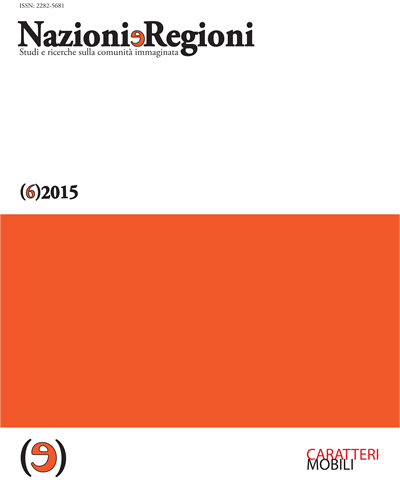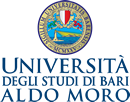I numeri del regionalismo: oggettivazione, immaginazione e cognizione
DOI:
https://doi.org/10.15162/2282-5681/1565Parole chiave:
Regionalismo, territorializzazione, quantificazione, discorso, cifra, regionalism, territorialisation, quantification, discourse, figuresAbstract
Questo articolo si pone come obiettivo quello di analizzare il ruolo dei numeri nell’opera di oggettivazione di una specificità regionale da parte degli attori sociali. Tramite la descrizione o la comparazione, i numeri contribuiscono a caratterizzare e alterizzare una regione, ponendone la singolarità e dandole una densità discorsiva e sociale. Come attrezzi cognitivi le cifre possono altresì contribuire alla politicizzazione diretta dei fatti sociali e alla loro costruzione sottoforma di problemi politici regionali. Il lavoro sul campo verte su sei attori regionali in Bretagna, Scozia e Galizia negli anni Settanta.
The aim of this article is to analyze the role of figures in the work of objectivization of a regional specificity by social actors. Through descriptions or comparisons, figures are instrumental in characterizing and altering regions, posing their uniqueness and giving them a social and discursive density. As cognitive tools, figures may also contribute to the direct politicization of social facts and their construction as regional political issues. This fieldwork focuses on six regional actors in Brittany, Scotland and Galicia in the 1970s.
Riferimenti bibliografici
Aitken K. (1997), The Bairns O’Adam. The Story of the STUC (1897-1997), Polygon, Edinburgh.
Alonso W. – Starr P. (eds.) (1987), The Politics of Numbers, Russel Sage Foundation, New York.
Anderson B. (2000), Comunità immaginate: origini e fortuna dei nazionalismi, trad. it di M. Vignale, Manifestolibri, Roma [1983].
Bacot P. – Desmarchelier D. – Rémi-Giraud S. (2012), «Le langage des chiffres en poli- tique», Mots, n. 100, p. 7.
Billig M. (1995), Banal Nationalism, Sage, London.
Bourdieu P. (1980), «L’identité et la représentation. Éléments pour une réflexion critique sur l’idée de région», Actes de la recherche en sciences sociales, n. 35, pp. 63-72.
De Winter L. – Türsan H. (eds.) (1998), Regional Parties in Western Europe, Routledge, London-New York.
Desrosières A. (1994), «Le territoire et la localité. Deux langages statistiques», Politix, n. 25, pp. 46-58.
Desrosières A. (1995), «Classer et mesurer: les deux faces de l’argument statistique», Réseaux, vol. 13, n. 71, pp. 11-29.
Hacking I. (1981), «How Should We Do the History of Statistics?», Ideology and Consciousness, n. 8, pp. 15-26.
Kernalegenn T. (2011), Une approche cognitive du régionalisme. Identités régionales, territoires, mouve- ments sociaux en Bretagne, Écosse et Galice dans les années 1970, Tesi di dottorato, Université de Rennes 1.
Kernalegenn T. (2013), «Le réveil des revendications régionalistes et nationalitaires dans le monde occidental au tournant des années 1968: analyse d’une ‘vague’ nationale», Fé- déralisme-Régionalisme, vol. 12, n. 1.
Law A. (2001), «Near and Far: Banal National Identity and the Press in Scotland», Media, Culture and Society, vol. 23, pp. 299-317.
Ogien A. (2010), «La valeur sociale du chiffre. La quantification de l’action publique entre performance et démocratie», Revue française de socio-économie, n. 5, pp. 19-40.
Rose N. (1991), «Governing by Numbers: Figuring out Democracy», Accounting Organizations and Society, vol. 16, n. 7, pp. 673-692.
Thiesse A.-M. (2001), La création des identités nationales, Europe XVIIIe-XXe siècle, Seuil, Paris [1999].
Downloads
Pubblicato
Fascicolo
Sezione
Licenza
Nazioni e regioni è una rivista open access che applica la licenza Creative Commons CC BY-NC-ND 4.0 a tutti i contenuti pubblicati.
Nazioni e regioni is an open-access journal that applies the Creative Commons CC BY-NC-ND 4.0 licence to all published contents.







